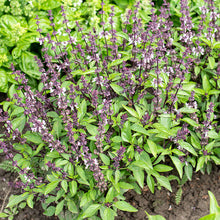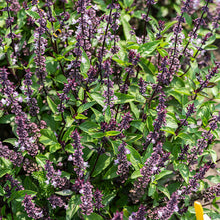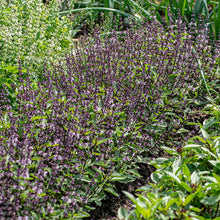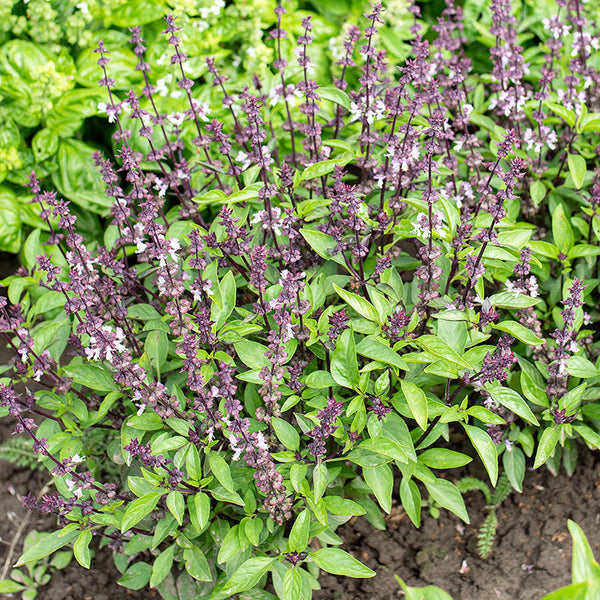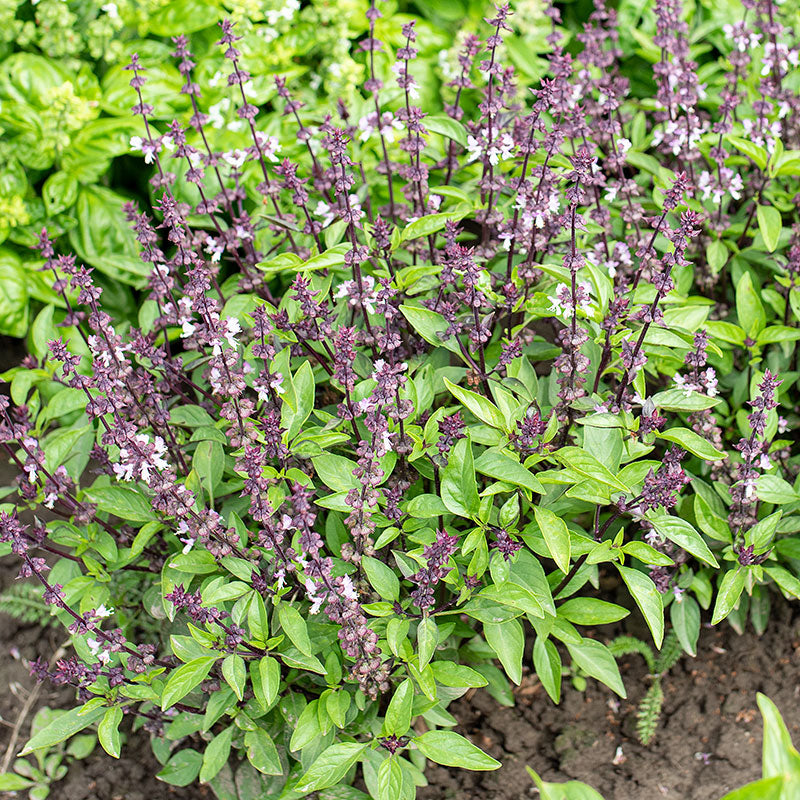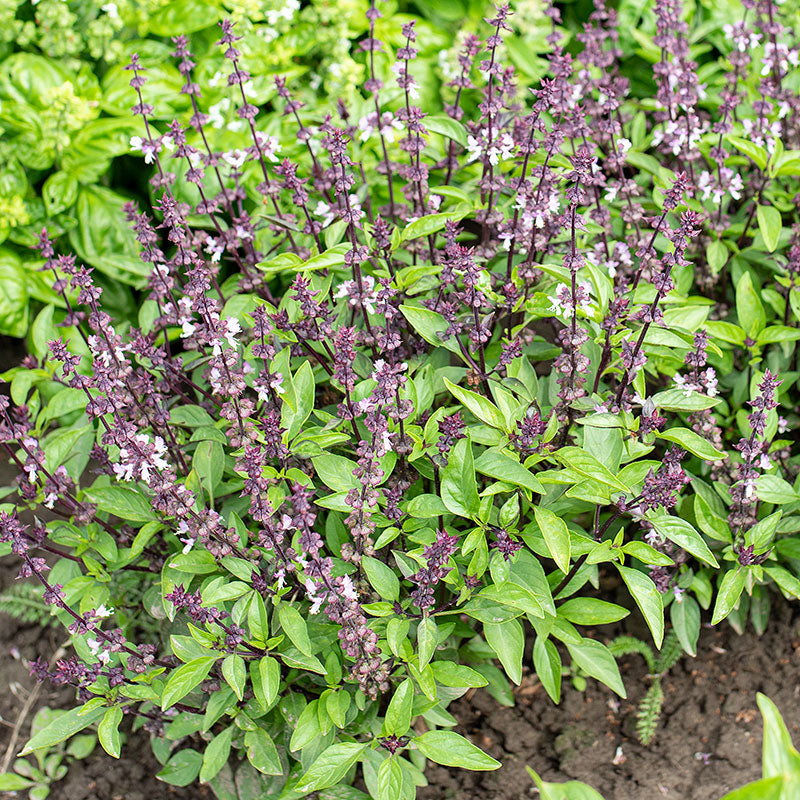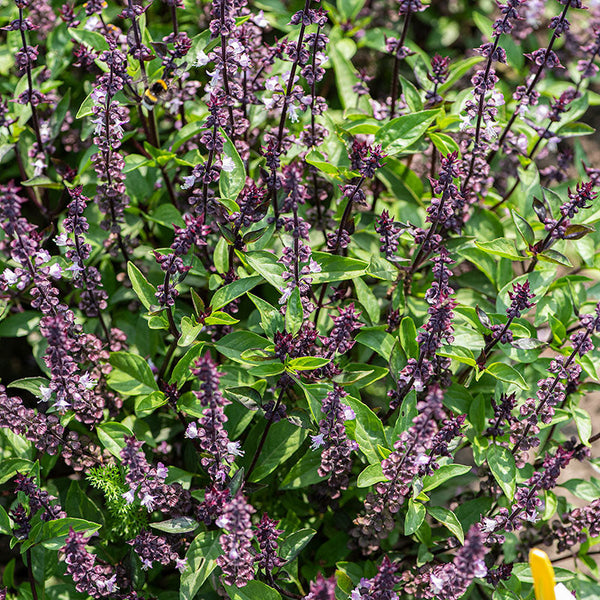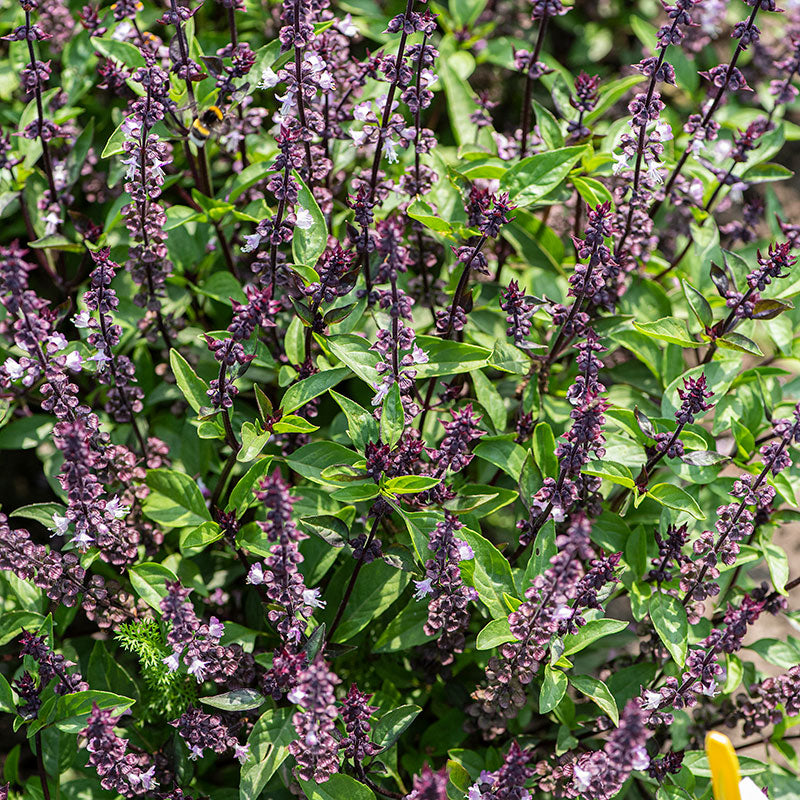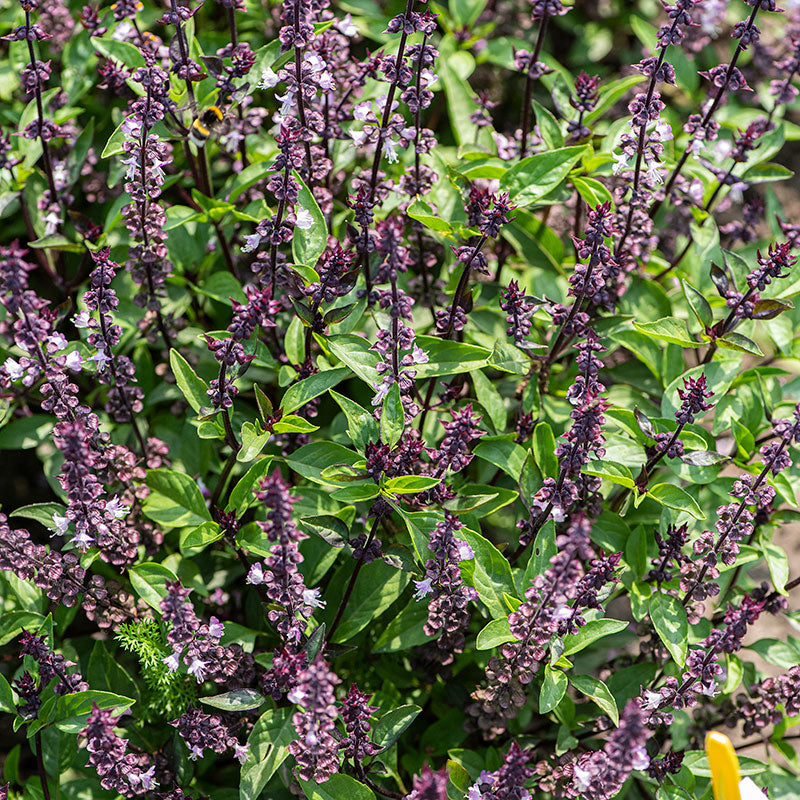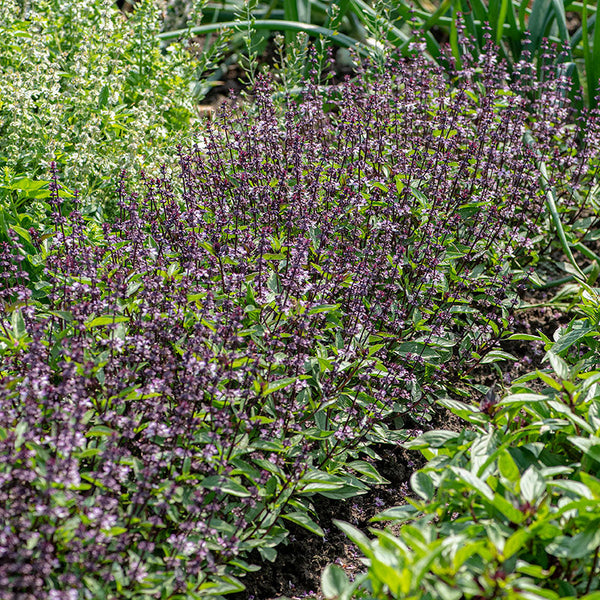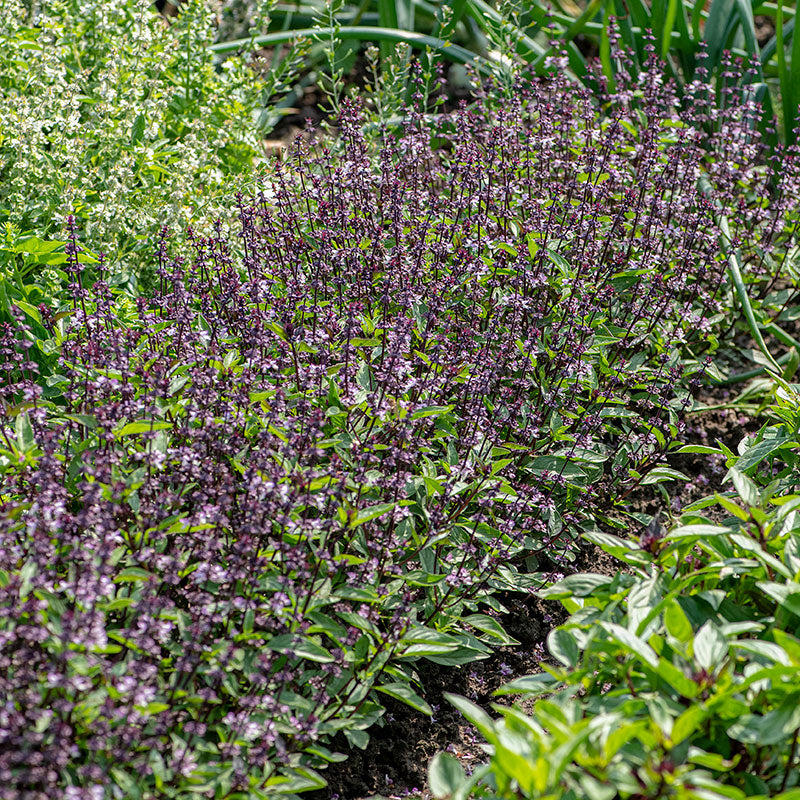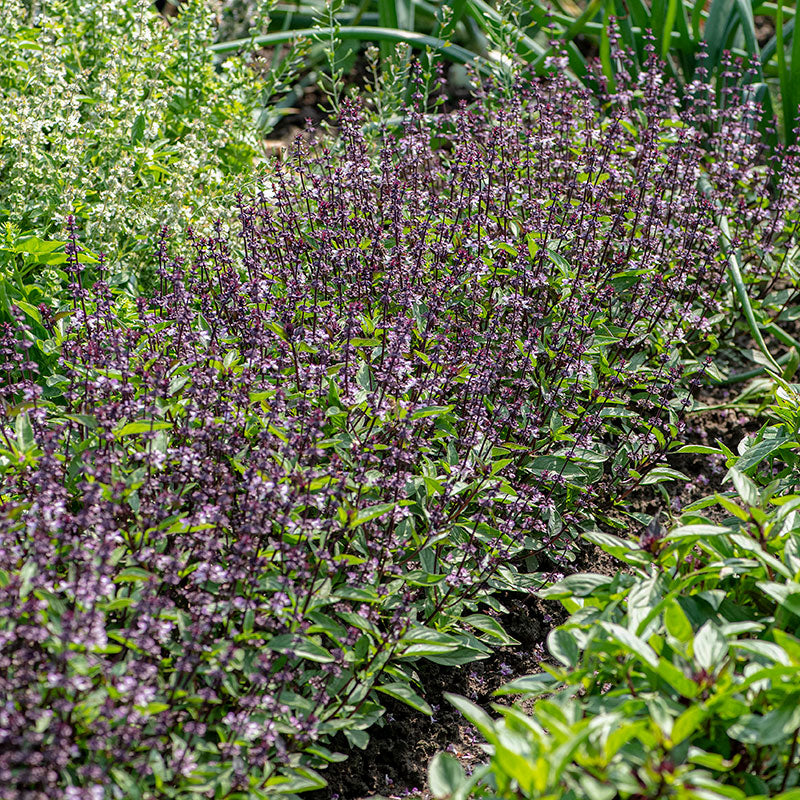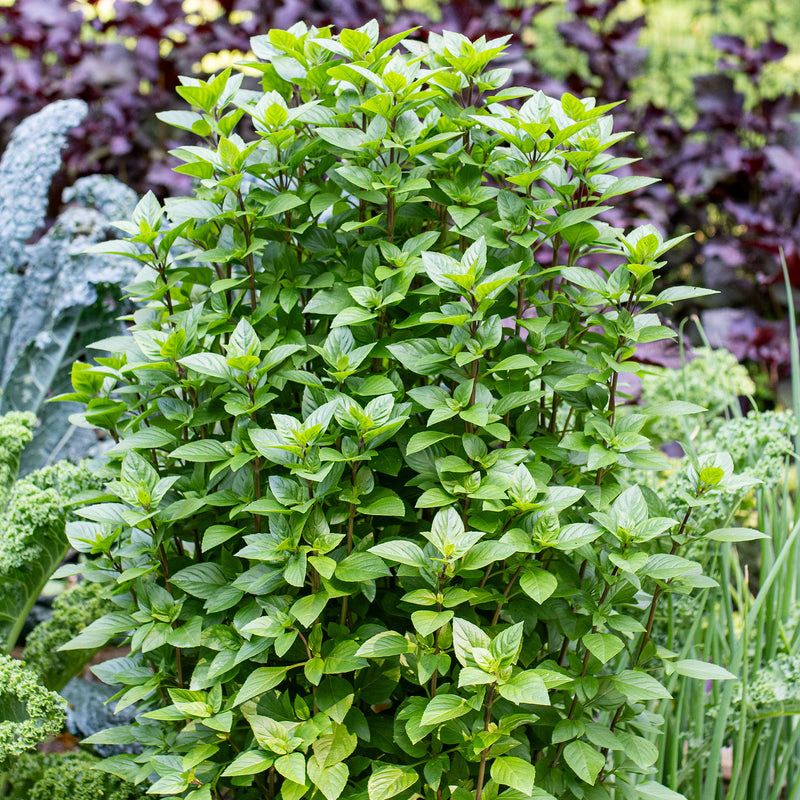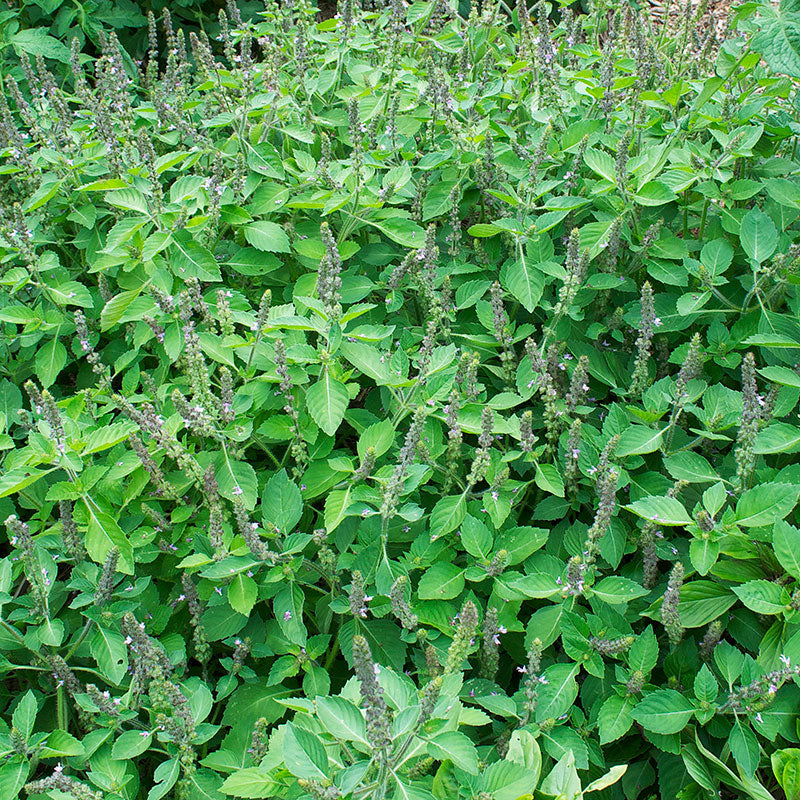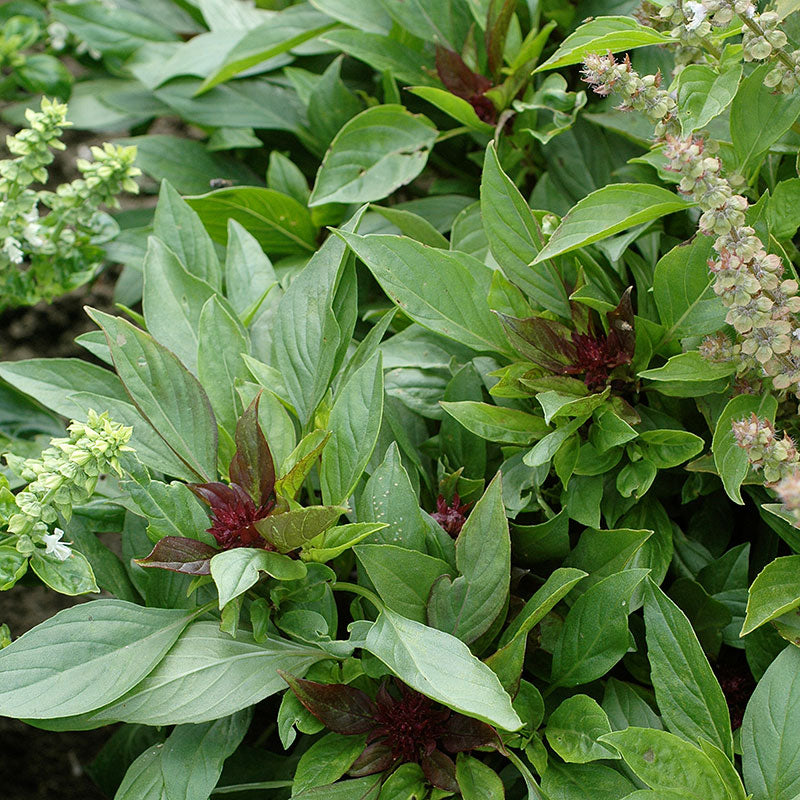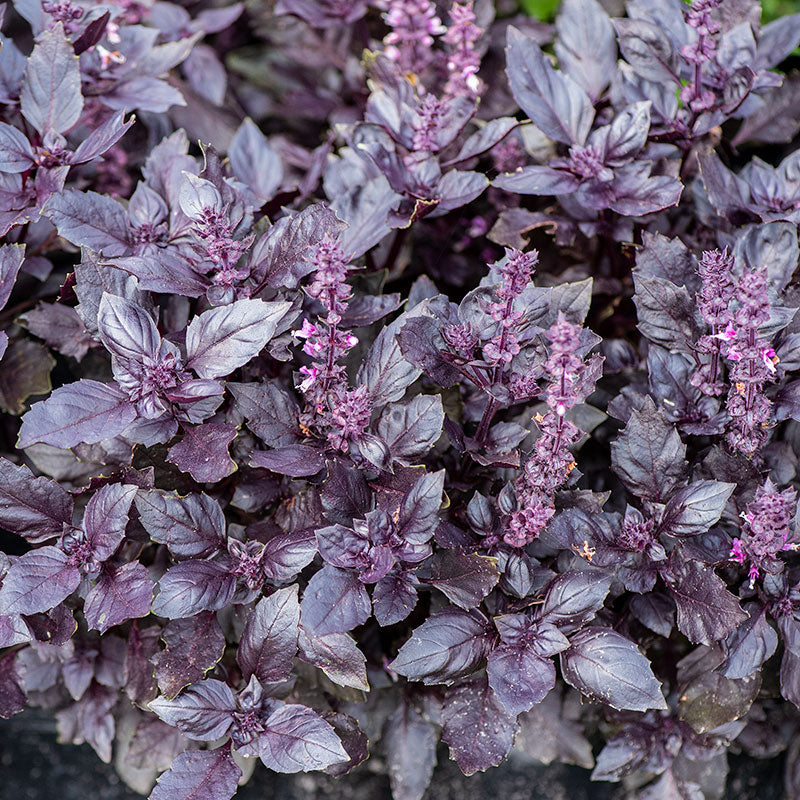SOWING INSTRUCTIONS
Seed To Bloom:
65 days to harvest
Starting Indoors:
Sow indoors 4-6 weeks before planting out. Keep at 70-90°F.
Starting Outdoors:
Direct sow after last frost.
PLACEMENT & CULTIVATION
Thai basil 'Queenette' has purple stems and flowers and small leaves with a spicy-sweet anise flavor. The leaves are thicker than sweet basil leaves and are delicious in cooked dishes such as soups, stir-fries, and curries. This basil loves heat and can't stand cold, so be sure to plant out when the night temperatures are regularly in the 50s 2-3 weeks after the last frost in northern areas. Keep trimming back and picking leaves to keep them productive and non-flowering for the best harvest.
Watering Details:
Keep moist—about 1" of water per week, more during particularly dry/hot spells, depending on the plant's location and sun-exposure.
Fertilizer:
Rake a few inches of compost into the soil prior to planting. Supplement with an all-purpose organic granular or liquid feed according to package instructions.
Diseases & Pests:
Avoid fungal problems by placing in a location with good airflow, and do not over-water.
When to Cut for Bouquets:
Harvest mature leaves individually or on branches, being sure to leave enough plant behind for the plant to continue to flourish.






























